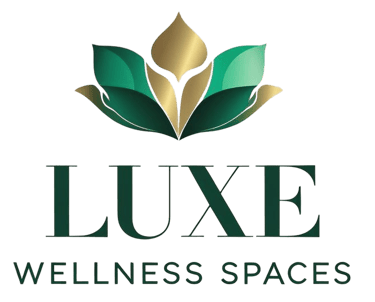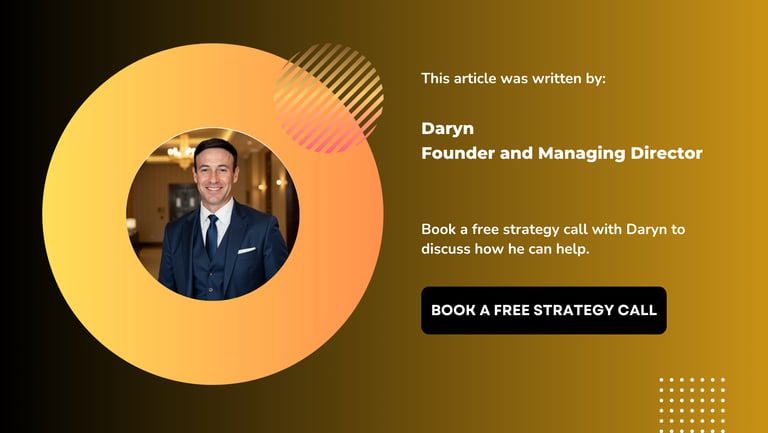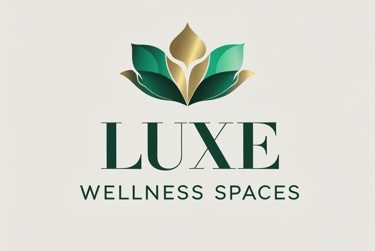How to Transform Your Gym Into a Longevity Center
Build a longevity center with testing, coaching, and recovery that boost retention by 30%. Real examples, step-by-step plan, and ROI proof inside.
Daryn Berriman
10/21/20258 min read
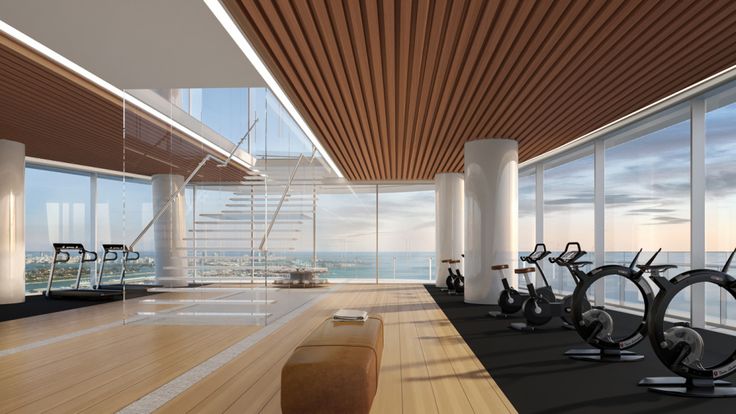

Most gyms and wellness clubs can evolve into longevity centers by layering health testing, personalized coaching, and recovery services onto their existing training programs. The model works by measuring baseline health markers, building 12-week protocols that mix strength training with recovery modalities, then retesting to prove progress. This shift from selling access to delivering outcomes typically raises both member retention and revenue per member.
Key facts:
77 million Americans held fitness memberships in 2024, the highest on record, signaling strong appetite for structured wellness programs (Health & Fitness Association, April 2025).
The global wellness economy hit $1.8 trillion with accelerating demand for science-backed, measurable health services (McKinsey, January 2024).
Higher VO2 max correlates strongly with lower all-cause mortality, making cardio fitness testing a legitimate longevity signal (QJM, September 2023).
Regular sauna use shows associations with cardiovascular benefits in population studies, though optimal protocols are still being refined (Journal reviews, 2024).
Equinox launched EQX Optimize in May 2024, packaging biomarker testing with coaching and recovery to meet premium member demand for longevity programs.
Your members aren't buying gym memberships anymore.
They're buying extra years of good health. The ones who stick around? They want proof that their workouts are actually working. If you can measure what matters, coach to a clear plan, and help people recover faster, you're not running a gym anymore. You're running a longevity center.
Here's what that actually means. A longevity center is a facility that pairs traditional training with simple health assessments and targeted recovery tools, then sells the whole thing as outcome-focused programs. You start with baseline measurements across body composition, cardiovascular fitness, strength, and mobility. Then you build a 12-week plan that weaves together resistance training, conditioning work, movement quality, and recovery habits like heat exposure or breathwork. Every six to twelve weeks, you retest the same markers so members can see tangible progress. The business model shifts from access fees to program fees, which nearly always improves retention and spend per member. The evidence supporting this approach is solid, and consumer demand is already there waiting for you.
The wellness market is massive and growing fast, with consumers hungry for services backed by data instead of hype. Fitness clubs are the perfect home for healthspan programs because you already have member trust, physical space, and trained staff. You're not trying to become a medical clinic. You're just adding better inputs and tighter feedback loops to your coaching. That's it.
The timing matters too. People watched their health markers swing during the pandemic. They got serious about prevention. They also got comfortable with tracking data from wearables and apps. Now they expect their gym to help them interpret that data and improve the numbers that actually matter.
Focus on signals that respond to training and link to health outcomes. VO2 max is the gold standard because it tracks your peak oxygen use during exercise and consistently predicts longevity in population studies. If a full VO2 max test feels too clinical or expensive, use a validated submaximal field test or even a timed walk test.
Add body composition scanning, resting heart rate, grip strength, and a basic movement screen. These five markers are repeatable inside a normal gym workflow, they change with good programming, and they give you a clear before-and-after story to tell.
Members want services that help them feel better and perform better. Heat exposure through sauna has promising data in observational studies linking regular use to cardiovascular benefits, though the exact protocols and mechanisms are still being nailed down. Cold exposure is gaining traction for recovery and stress resilience, with research ongoing.
You don't need a spa buildout. Start with one infrared sauna cabin, one cold plunge or contrast shower setup, and maybe compression boots if budget allows. Teach safe usage protocols and offer time-boxed sessions. Position these as recovery accelerators, not miracle cures.
Equinox rolled out their Optimize program in mid-2024, combining biomarker blood testing with personalized training plans, regeneration services, and one-on-one coaching. It's premium pricing for a premium product. You can mirror the core principle at a lower price point by using validated field tests instead of full lab panels, partnering with local labs for anything clinical, and building a clear 12-week roadmap that members can understand and follow.
The lesson from Equinox? Package everything. Don't sell à la carte assessments. Sell outcomes.
Active Wellness clubs implemented smart strength equipment from EGYM and bundled it with baseline testing and progress tracking. Results: 50% higher revenue per upsell, 10% of existing members upgraded to premium tiers, and 93% retention inside their Activate coaching model. The secret wasn't fancy tech. It was showing visible, measurable progress every quarter and making it easy to buy.
Not every wellness gadget or blood panel adds value. Infrared sauna research is promising but still needs larger randomized trials. Routine biomarker panels for healthy adults aren't universally recommended by medical organizations, and some can lead to unnecessary anxiety or interventions. If you're adding lab testing, work with licensed partners, use informed consent, and focus on markers that directly inform training and lifestyle decisions. Stay in your lane.
Here's the system that works across gyms, hotel wellness centers, and luxury home facilities:
Intake. Health history, current goals, informed consent.
Baseline testing. Body composition scan, cardiovascular fitness test, movement screen, grip strength, resting heart rate.
The plan. Twelve weeks structured as two strength sessions, one conditioning session, one mobility session per week, plus basic nutrition guidance and weekly recovery protocols.
Recovery menu. Sauna sessions for 15-20 minutes, guided breathwork, contrast circuits if you have cold exposure.
Retest and review. Every six to twelve weeks, repeat the baseline battery and sit down to review changes.
Show the change. Display improvements in fitness proxies, strength benchmarks, body composition, plus subjective measures like energy and sleep quality. Share member transformation stories with permission.
Your implementation checklist:
Pick your baseline tests: VO2 submaximal protocol or 12-minute walk test, plus bioelectrical impedance or DEXA for body composition.
Set a 12-week training template with a clear weekly structure.
Install a recovery corner: one heat source, one cold option if possible, quiet space for breathwork or meditation.
Create two clear offers: "Baseline Assessment + Custom Plan" and "Optimize 12-Week Program" with retest included.
Train your coaches to explain data in plain language without clinical jargon.
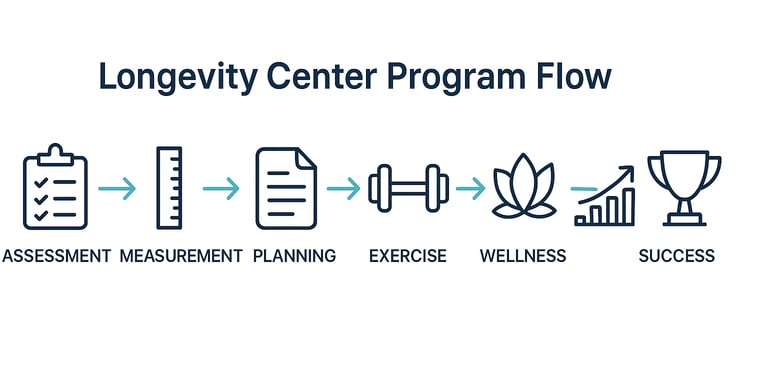

Try this in five minutes:
Write your Baseline Plus Plan offer on one page: assessment session, 30-minute data review, 12-week program, retest at week 12.
Design a one-page scorecard showing four categories: cardiovascular fitness, strength, body composition, recovery metrics.
Place a QR code at your check-in desk linking to a booking page for the baseline assessment.
Common mistakes and how to fix them:
Mistake: Selling equipment access or class packs instead of outcomes.
Fix: Package assessment, plan, coaching, and retest as a single program price.
Mistake: Over-medicalizing with endless lab panels that scare or confuse members.
Fix: Stick to fitness-scope markers you can legally measure, and partner with licensed providers for anything clinical.
Mistake: No storytelling.
Fix: Track member progress with consistent retesting and share wins through testimonials, photos, and data charts with consent.
Mistake: Complicated pricing with add-ons and upsells.
Fix: Two core programs, flat pricing, and optional recovery session packs.
Mistake: No testing rhythm.
Fix: Book the retest appointment during the first consult and celebrate improvements every quarter.
If you want help transforming your gym, hotel wellness facility, or luxury home into a true longevity center with validated testing protocols, clear member programs, and recovery services people actually use, book a free strategy call with Luxe Wellness Spaces. We'll map the blueprint, train your team, and help you launch in 30 days.
FAQS
Q: What exactly is a longevity center in a gym context?
A: It's a fitness facility that combines traditional training with health assessments and recovery modalities, packaged into outcome-focused programs with regular retesting. Think baseline fitness testing, personalized coaching, structured training blocks, heat or cold exposure, and progress reviews every six to twelve weeks. Equinox's Optimize program is the high-end version of this model.
Q: Which tests should we start with if we're not a medical clinic?
A: Stick to fitness-scope tools your coaches can administer: VO2 submaximal or field tests, body composition scanning, grip strength, basic movement screens, and resting heart rate. These markers are repeatable, respond to training, and link to meaningful health outcomes like cardiovascular fitness and functional capacity.
Q: Are saunas and cold plunges backed by science?
A: Sauna use has observational data linking regular sessions to cardiovascular benefits in population studies, though the specific mechanisms and optimal protocols are still being researched. Cold exposure shows early signals for recovery support and stress response modulation, with more research needed. Present both as recovery tools with emerging evidence, not medical treatments.
Q: Should we offer comprehensive blood panels to all members?
A: Be cautious. Routine broad biomarker testing for healthy adults isn't universally recommended by medical organizations and can sometimes create unnecessary worry. If you add lab work, partner with licensed providers, use proper informed consent, and focus on markers that directly inform training and lifestyle choices rather than screening for diseases.
Q: What kind of business results can we expect from this model?
A: Facilities that package assessment with guided training and technology typically see higher revenue per member and better retention. One example: gyms using the EGYM smart strength model with progress tracking reported 50% more revenue per upsell, 10% of members upgrading tiers, and 93% retention in coached programs. Your results will vary based on market and execution.
Q: Is there real market demand for longevity services?
A: Yes. The wellness economy reached $1.8 trillion globally with growing consumer interest in data-driven health services, and US fitness membership hit record highs at 77 million in 2024. Members are actively looking for structured programs that deliver measurable health improvements, not just equipment access.
Q: How often should we retest members?
A: Every six to twelve weeks is practical for fitness markers and gives enough time to see meaningful change. Book the retest appointment during the initial consultation and review improvements using a simple scorecard linked directly to their training plan.
Q: Can this model work in hotels or luxury homes?
A: Absolutely. The same principles apply at smaller scale: compact assessment tools, a personalized coaching plan, and a designated recovery space. The value proposition shifts to convenience and expert guidance that fits travel schedules or home life without requiring a commercial gym membership.
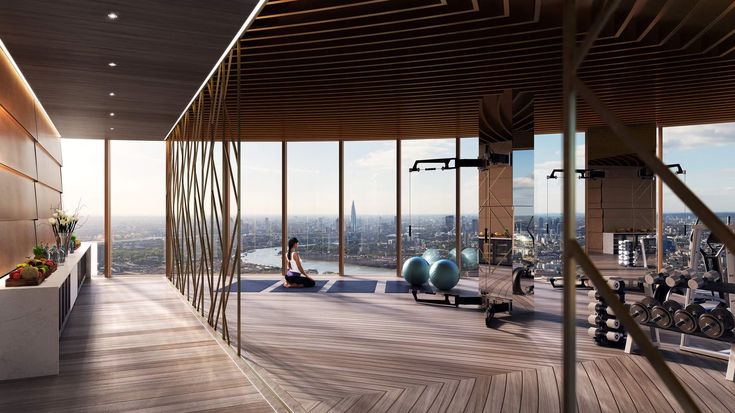

1. McKinsey & Company - Global Wellness Industry Report https://www.mckinsey.com/industries/consumer-packaged-goods/our-insights/feeling-good-the-future-of-the-1-5-trillion-wellness-market
2. IHRSA / Health & Fitness Association https://www.healthandfitness.org .
3. PubMed Central - National Library of Medicine https://www.ncbi.nlm.nih.gov/pmc
4. Oxford Academic - QJM: An International Journal of Medicine https://academic.oup.com/qjmed
5. Equinox - Corporate News & Programs https://www.equinox.com
By Daryn Berriman - Principal Wellness Business Consultant. Last Updated 2025.10.21.
Further reading on our blog: 'Holistic Gym Design: Recovery Spaces That Drive Revenue'
• Explore our Spa & Wellness Consultancy to scope project phases and services.
• See how we structure Fitness and Leisure concepts before you commit to equipment.
• Developers and luxury homeowners can review Home Wellness Spaces for private suites and villas.
• Learn why Luxe Wellness Spaces blends design, operations, and growth under one roof.
• View a Concept-to-Launch case study that hit break-even in 90 days.
